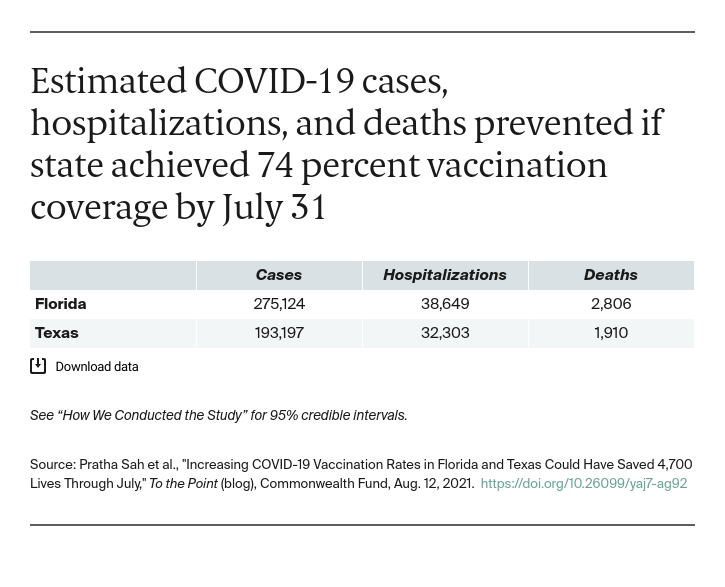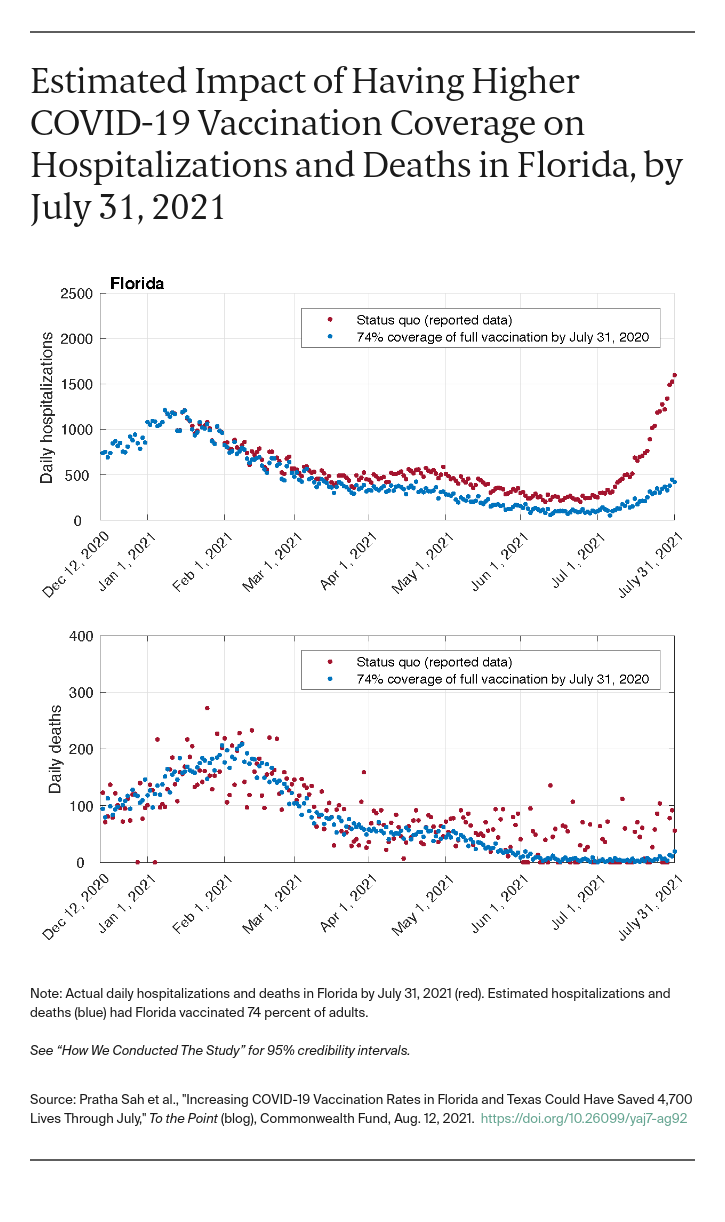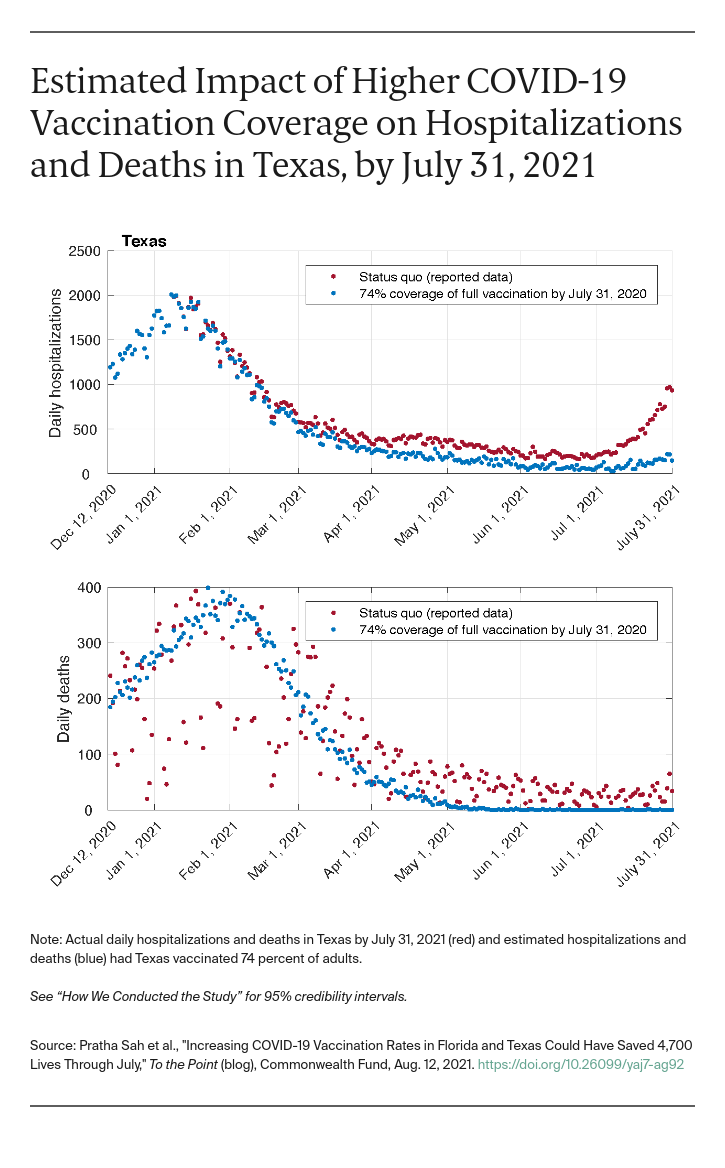The success of COVID-19 vaccination campaigns in many states demonstrates the real-world feasibility, and impact, of achieving high vaccination coverage. By the end of July, the five highest-performing states — Vermont, Connecticut, Massachusetts, Maine, and Rhode Island — had fully vaccinated an average of 74 percent of adults and lowered rates of COVID-related hospitalizations and deaths compared with other states. In contrast, the two states with the greatest burdens of cases, hospitalizations, and deaths currently — Florida and Texas — had fully vaccinated only 59.3 percent and 55.6 percent of their adult residents, respectively.
We calculated the number of deaths, hospitalizations, and cases that could have been averted if Florida and Texas had reached vaccination coverage of 74 percent. We found that by doing so, together the two states could have averted more than 70,000 hospitalizations and 4,700 deaths by the end of July.
The highly infectious Delta variant, which is driving the current surge, makes the situation even more dire. As of Aug. 11, the seven-day average of new daily cases had exceeded 118,000 across the U.S., higher than the peak the summer before. Outbreaks are predominantly affecting states that have relatively low vaccination coverage, with nearly a third of recent cases occurring in Florida and Texas.
Florida recorded the nation’s highest daily death toll — 141 (averaged over seven days ending Aug. 10, 2021). Texas followed, with 63 deaths.
Our previous analyses have demonstrated that the U.S. vaccination campaign against COVID-19 prevented nearly 1.25 million hospitalizations and 280,000 deaths nationwide by the end of June. Our current analysis found that fully vaccinating 74 percent of adults in Florida by the end of July would have reduced hospitalizations by nearly 39,000, from 144,782 to 106,113, and deaths by an estimated 2,806, from 19,489 to 16,683 (table). In Texas, increasing vaccination rates would have reduced hospitalizations by more than 32,000, from 163,058 to 130,755, and deaths by more than 1,900, from 29,435 to 27,525, according to our estimates (Table 1).

We found that enhanced vaccination would have markedly curbed the rise of cases in Florida and Texas — averting more than 460,000 cases. Since the start of vaccination on Dec. 12, 2020, until July 31, 2021, Florida and Texas have reported more than 1.5 million and 1.7 million cases, respectively. Achieving 74 percent vaccination coverage by July 31, 2021, could have reduced the case count to approximately 1.3 million cases in Florida and 1.5 million cases in Texas.


As the Delta variant continues to spread rapidly in Florida and Texas, efforts to increase vaccination rates are critical to reducing the risk for COVID-19-related hospitalization and death. Across the U.S., the vast majority of hospitalizations and deaths are occurring among the unvaccinated. In Florida and Texas, the rapid surge in demand for hospital care needed for unvaccinated cases has overwhelmed health care facilities and pushed intensive care units to their capacity limits.
There remain more than 7 million residents in Florida and 9 million in Texas who are eligible to be vaccinated but have not gotten the jab. If estimates through the end of July hold true, many of these people will suffer through hospitalizations, and some will likely die — making more rigorous vaccination campaigns in those states all the more imperative.







